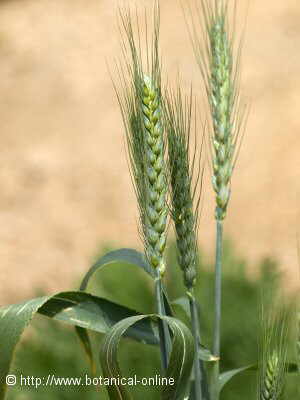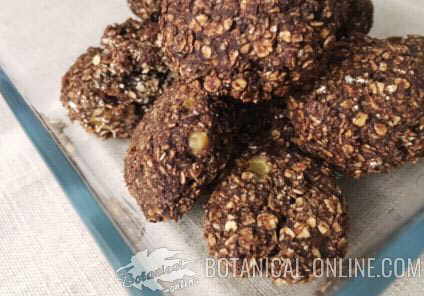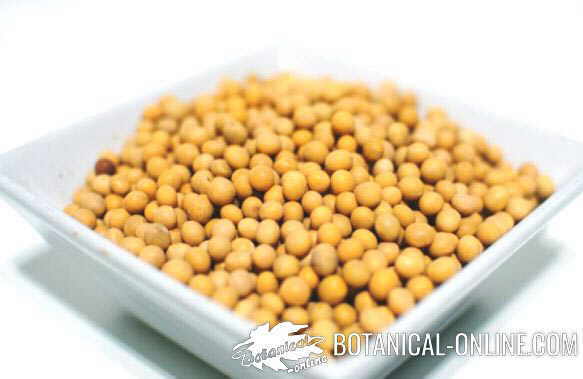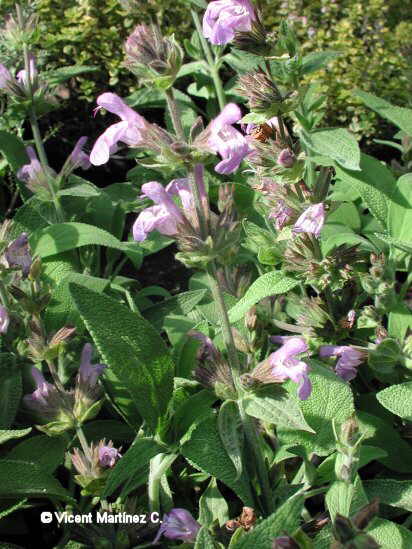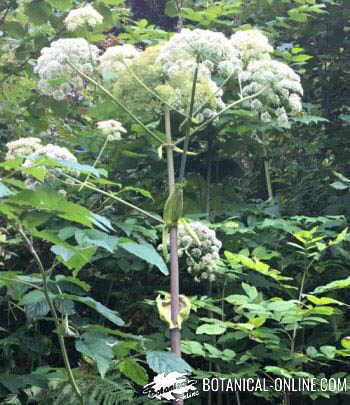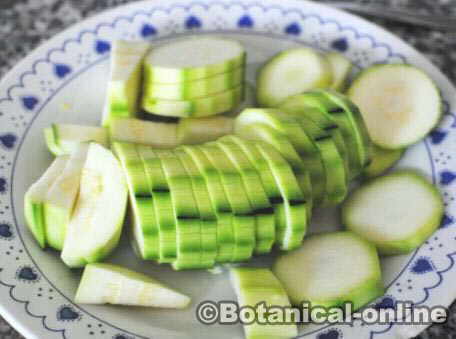Health benefits of chia (Salvia hispanica L.)
Chia against cardiovascular disease
The role of chia on cardiovascular disease is due to its high content in essential fatty acids Omega 3; to its high percentage of soluble fiber in its composition, and its dietary intake of calcium, trace elements, antioxidants and plant substances such as beta-sitosterol.
Omega 3 fatty acids have anti-inflammatory, antiarrhythmic and antithrombotic properties, with direct consequences for improving cardiovascular health. In this direction, it is very important the contribution of calcium, zinc and and other minerals that help muscle contraction of the veins.
Antioxidants components also work positively for the good condition of the blood vessel walls. This effect is enhanced by vegetable substances such as beta-sitosterol.
Furthermore, chia seeds contain mucilaginous fiber that acts to reduce cholesterol absorption from the diet. Also, beta-sitosterol action against cholesterol is very positive.
Chia seeds for hypertension an varicose veins
Currently this seems the most important field of research about chia seeds. Its contribution in Omega 3 does not go unnoticed on a diet where the consumption of foods rich in these fats is increasing nowadays.
Chia seeds, along with flax and walnuts, is the plant food with most Omega 3. So, the introduction of this seed in the diet of farm animals to increase the Omega 3 content of eggs and raise dairy products is being tested.
Adding chia to food, along with dietary habits and healthy lifestyle, reduces the risk of cardiovascular disease such as hypertension or varicose veins.
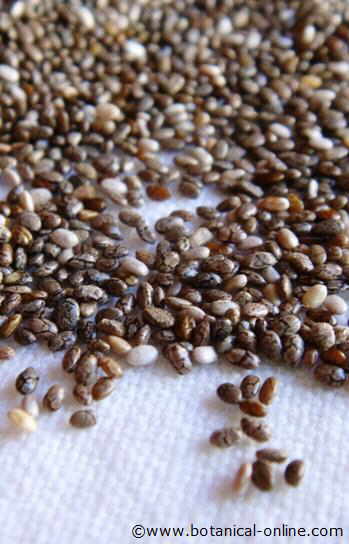
Photo of chia seeds
Chia for digestive disorders
Chia seeds were already used in ancient times for digestive disorders.
In the sixteenth century, the Florentine Codex mentions it as a treatment for diarrhea, and, in the eighteenth century, Vicente Cervantes also spoke about its laxative properties.
These qualities are due to the high concentration in mucilage, a soluble fiber present in this seed. Soluble fiber forms a gel, appreciable by diluting the seed in water, which increases the volume of the seed, causing it to press the walls of the digestive tract and stimulating peristalsis (bowel movement).
Furthermore, this gel, consisting of soluble fiber and water, hydrates and facilitates the passage of food through the digestive tract, acting as a cathartic (something that accelerates defecation).
Therefore, chia is an ideal food to help prevent and treat constipation.
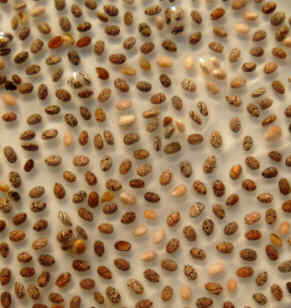
In the picture: chia seeds soaked and drained. One can observe the gel that soluble fiber forms with water on the surface of chia.
Chia fiber has beneficial effects on the liver
Soluble fiber has demonstrated effects on the lower reabsorption of biliary cholesterol. That is, a diet rich in soluble fiber, as it could be when supplemented with chia, prevents reabsorption of some of the digestive juices that come from the gallbladder and are rich in cholesterol. These qualities have already been reported in the twentieth century by Maximino Martinez in the uses of chia against gallbladder stones.
Therefore, this fiber supplement is recommended for people who have undergone surgery for gallbladder and to prevent gallbladder stones.
One tablespoon of chia (10g) provides us with 5g of fiber in very low volume. Recommended daily intake of fiber. between 25 and 35 g |
Chia helps control diabetes
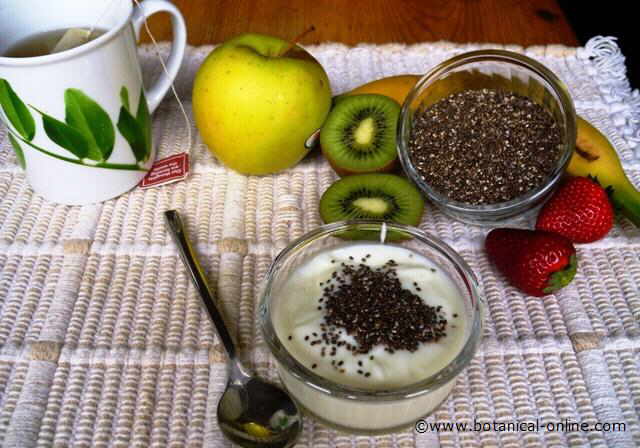
In the picture: Chia yogurt, fresh fruit and tea. Chia yogurt combines with all fresh fruits. This is a perfect combination to fight constipation.
To control diabetes, chia regulatory action is exerted by its fiber. This mucilaginous fiber form an aqueous gel that causes the sugars and starches from food to be absorbed more slowly, but we must take care of a proper diet for diabetes. In addition, the contribution of omega 3 is interesting for preventing or treating cardiovascular disease often present with diabetes.
Therefore, if we add 1 teaspoon of chia to the salad, fruit, and together with legumes and cereals, chia will help absorb sugars from food more slowly.
Chia for weight-diet
Chia seeds contain, as already stated, large numbers of mucilage. This is a type of soluble fiber, that. in contact with water, hydrates and increases in volume by forming an aqueous gel.
We can easily observe this reaction with chia seeds, mixing them with water and stirring. In fact, in Mexico, there is is a traditional beverage called “chia fresh water,” which is characterized by the aqueous suspension of numerous “black points”, which actually are the chia seeds in their own gel.
When seeds are consumed with a glass of water, the fiber present in chia seeds is hydrated and multiplies its volume in the stomach. This will produce a feeling of fullness and satisfaction, so it will not be necessary for us eating so much. This can be very suitable for obesity treatment.
Furthermore, the carbohydrates of food will be absorbed slowly preventing craving for sweets to appear after eating. If, in addition, if we accompany this remedy with a low fat diet, weight loss may be greater.
Other uses of chia
Some other uses of chia are, for example:
- Chia seeds ointment for facial and body painting in the religious festivals of indigenous cultures.
- Chia leaves for muscle pain. The leaves of this plant is heated and applied as a poultice on sore muscle.
Recommended amount of chia seeds
- Constipation: to benefit from the regulatory effects of this seed, it is recommended to take 2 to 4 teaspoons daily for 1 week, along with a glass of water. Once the intestinal transit normalized, we recommend keeping a supply of 12 teaspoons daily.
- It should be noted that against constipation it is also important a proper hydration, lactic bacteria (that came from yogurt), a diet with abundant vegetables and fruits rich in whole grains and legumes. Additionally, walking helps to activate the intestinal transit. (See more information about diet for constipation)
- Obesity: taking 1 teaspoon with a glass of water 30 minutes before each meal, three times a day, provokes the fiber present in the seed to be hydrated and multiplies its volume in the stomach. This will have a feeling of fullness and satisfaction, which will lead to eat less amount of food. Furthermore, the carbohydrates of food will be absorbed slowly preventing fresh desire to appear after eating. If, in addition, we accompany this remedy with a low fat diet, weight loss may be greater.
- Hypertension: We recommend adding 2 teaspoons two to three times a day on dishes or with yogurt or in a glass of water before each meal. The importance of these seeds on cardiovascular health rests on their property to provide satiety (helping to maintain weight), their contribution in Omega 3 and its contribution to antioxidant minerals.
- Diabetes: To control diabetes chia exerts its action through fiber. This fiber makes the sugars and starches from food to be absorbed more slowly, but we must take care of proper diet for diabetes. Add 1 teaspoon of chia on your salad, fruit, and along with legumes or cereals. This will help absorb sugars from food more slowly.
![]() More information about chia.
More information about chia.

